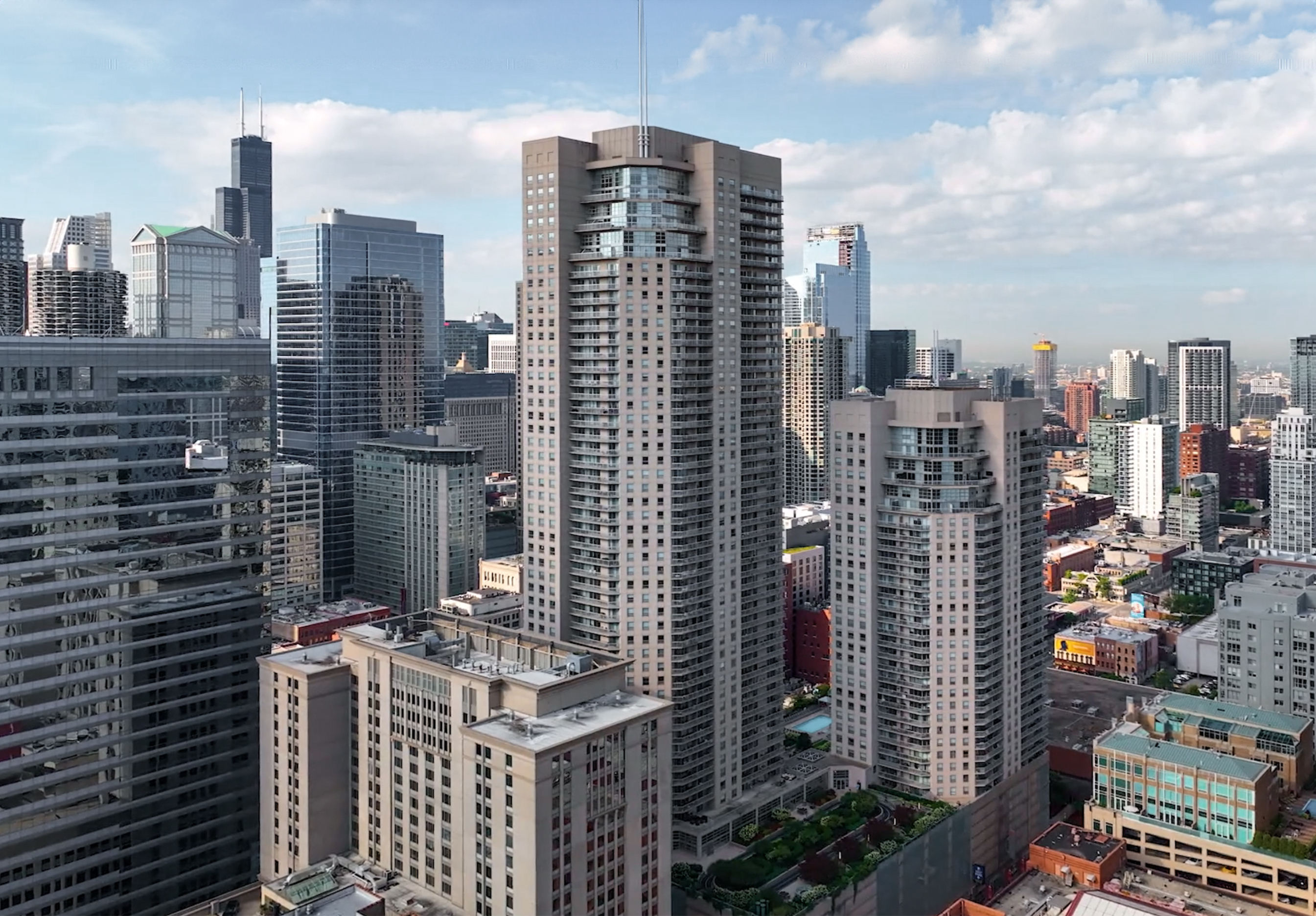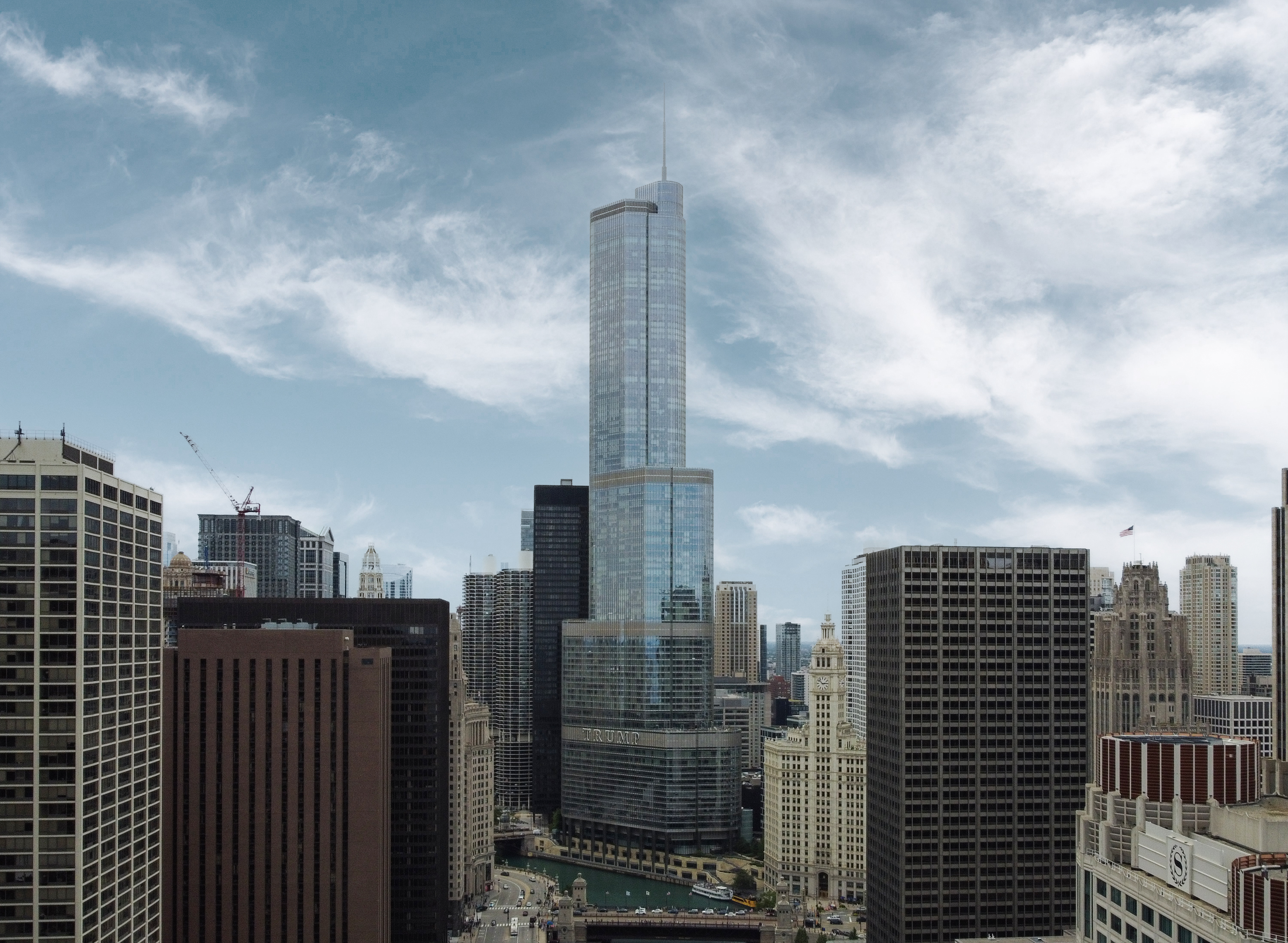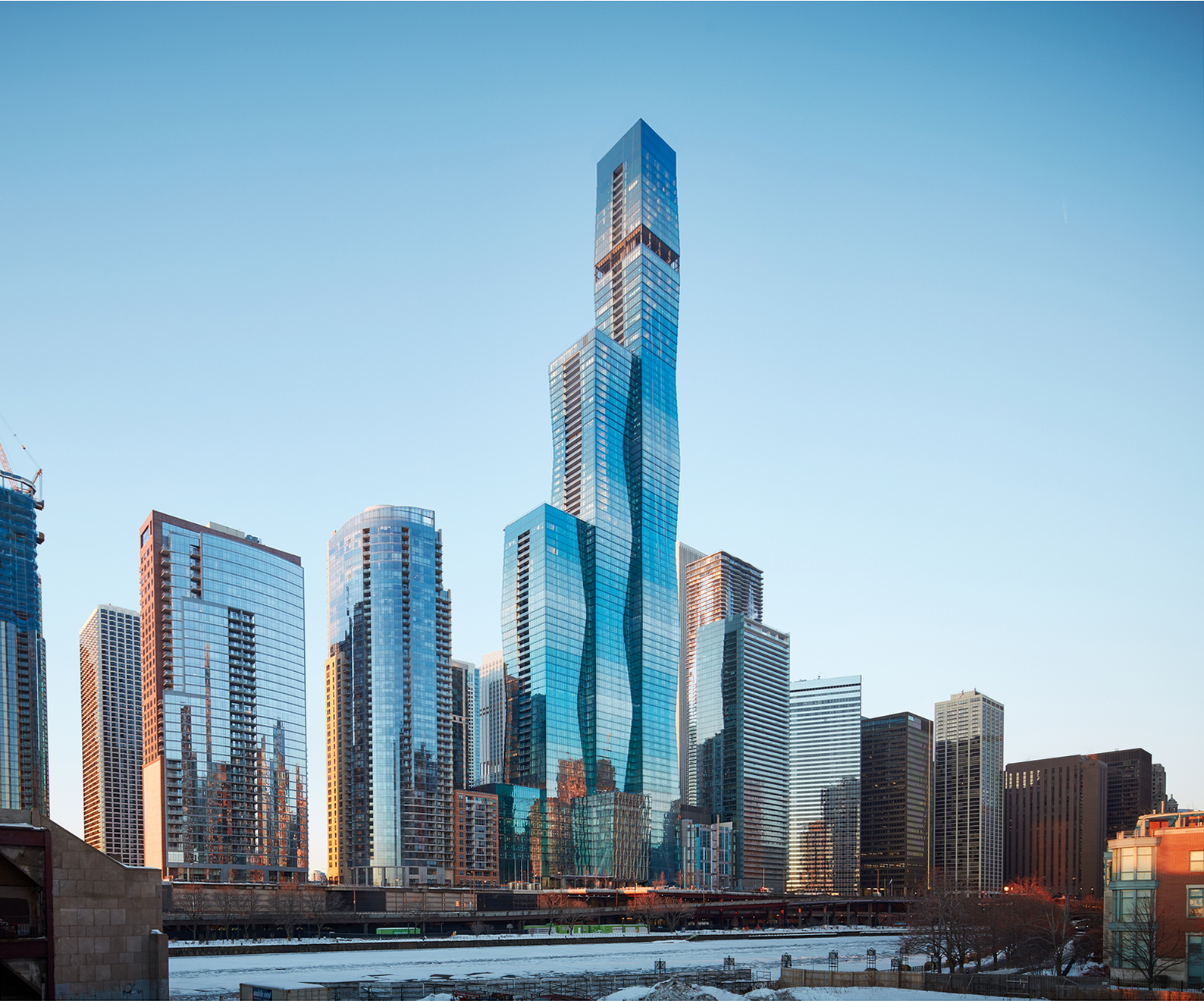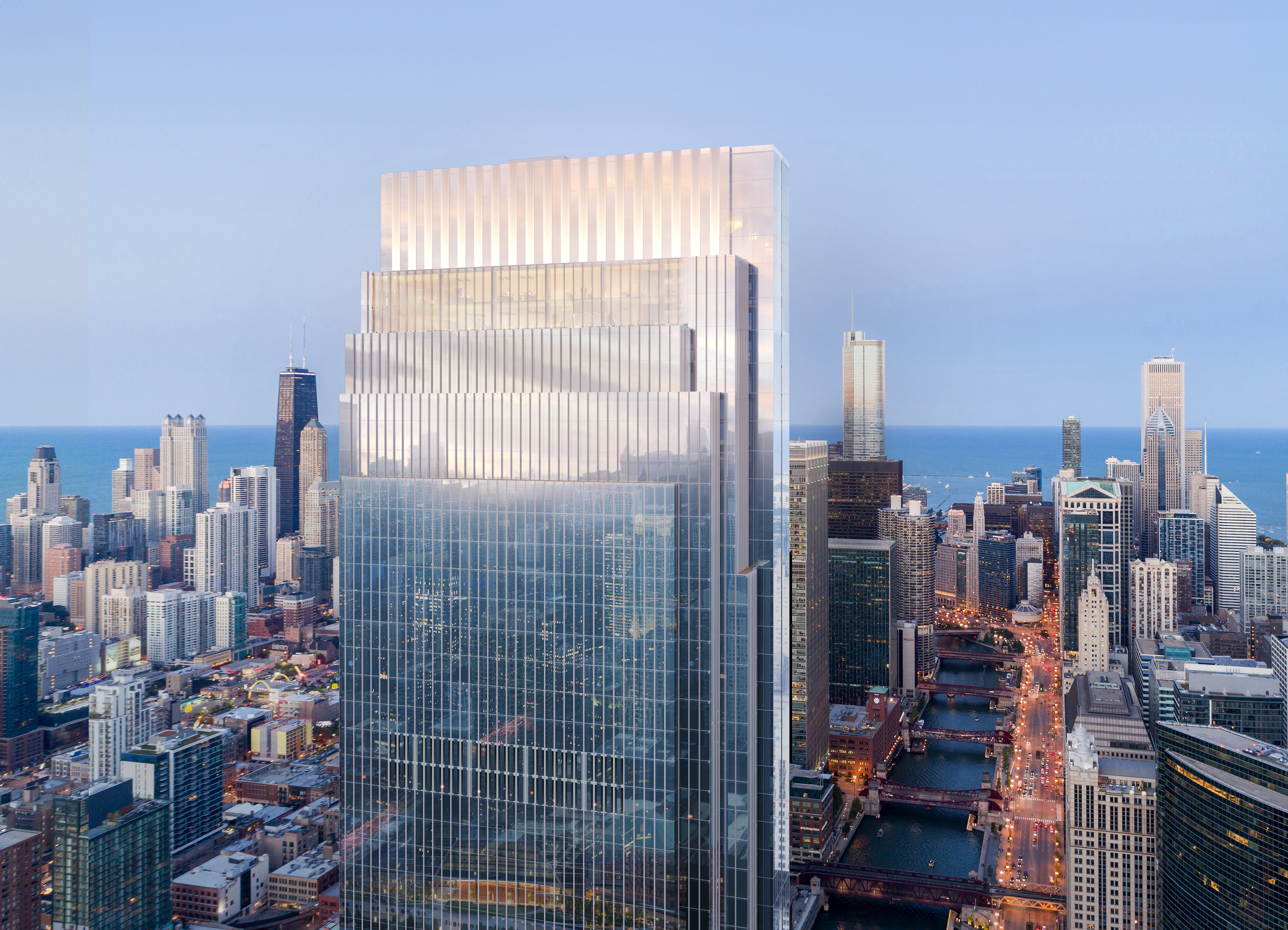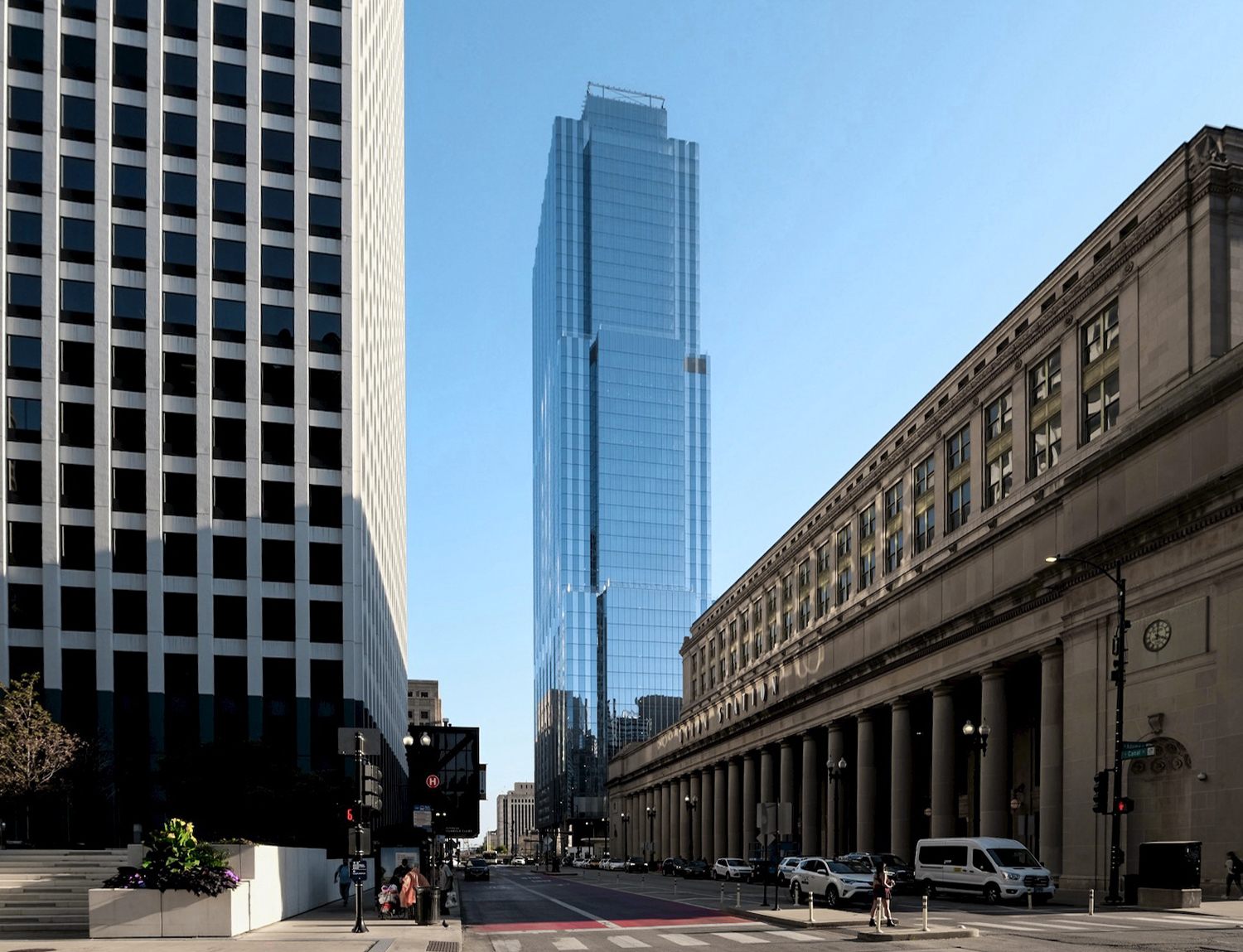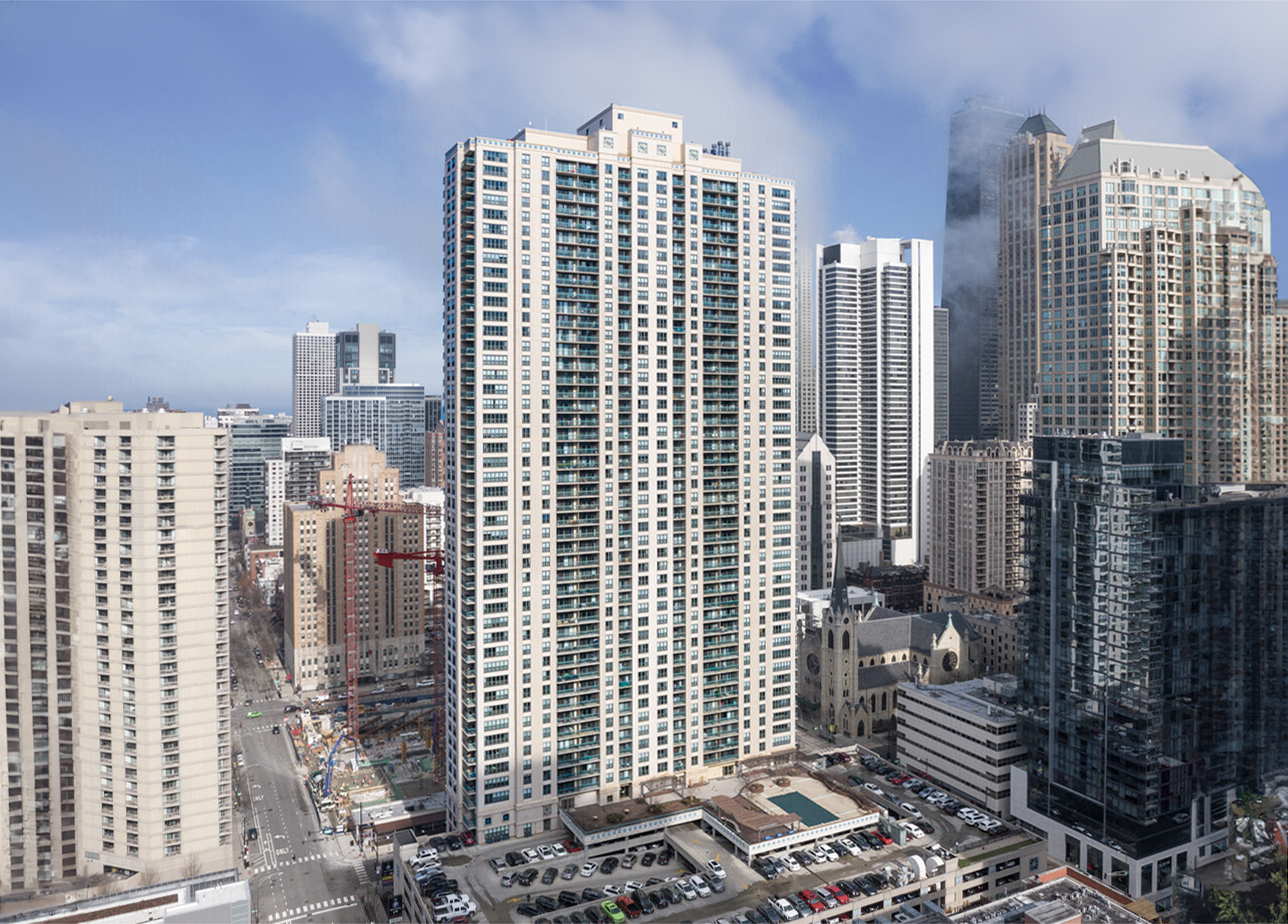The Grand Plaza I Building is a Contemporary skyscraper designed by Loewenberg + Associates, in association with OWP&P Architects, and built between 1997 and 2003, for a reported $200 million dollars, in Chicago, IL.
Grand Plaza I Building is not the only name you might know this building by though. It is common for companies to want to attach their names to iconic buildings when they move in, or for the general public to come up with nicknames, and this one is no exception. The Grand Plaza I Building is also known, or has been known as, The Residences at Grand Plaza, or Grand Plaza East Tower.
Its precise street address is 540 North State Street, Chicago, IL. You can also find it on the map here.
In 2021 the Grand Plaza I Building was awarded with the Resident Satisfaction award winners by SatisFacts.
The Grand Plaza I Building is one of the two towers that make up the Grand Plaza Complex, which takes up an entire city block.
